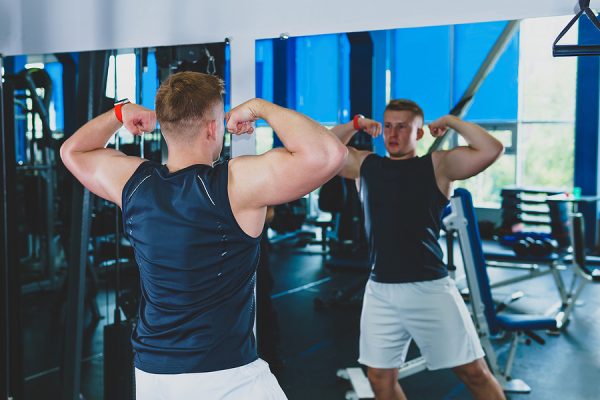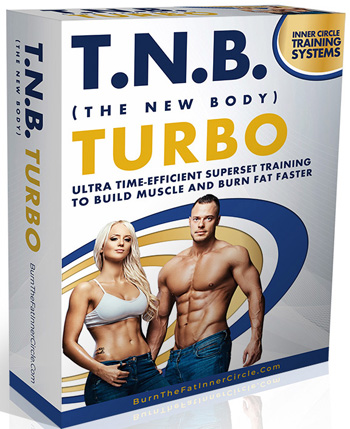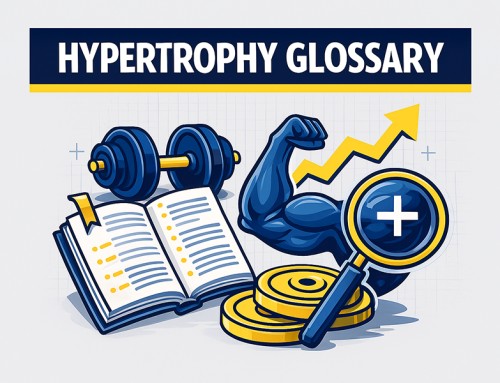So you’re wondering, “Should I bulk or cut?” Maybe you’re not sure because you heard out there in the social media and blog world that you’re not supposed go on a muscle building diet if your body fat is a little high. Then you wonder, “Well, how low does my body fat have to be before it’s ok for me to bulk? When is it okay for me to go into a calorie surplus for bulking? Never fear, the answer is here in today’s Burn the Fat, Feed the Muscle blog…

First of all, I have to get this off my pecs: I dislike the term “bulking” (or “bulk”). I know some readers might say it’s just semantics, but “bulking” carries the connotation that you’re gaining a lot of muscle, but also putting on a lot of fat at the same time. Some people insist that there are “dirty” bulks and “clean” bulks, but I’m still not keen about that terminology.
I prefer to simply say things, like “muscle gaining phase” or “muscle building diet” or even “massing” sounds better to me than “bulking.” My favorite term is “lean gaining.” Because why would anyone want to gain weight and have half of it show up in the form of mushy lard, if you could gain weight and most of it is muscle with minimum fat?
But sure, I get it that millions of people are googling “Should I bulk or cut?” That’s why I put “bulk or cut” in the blog title. Seo what I did there?
Okay, enough opening chatter. Let’s get right to it and answer the question, quickly and succinctly…
If your body fat is higher than average, and especially if you are significantly overweight, then focus on cutting down that body fat first. Go on a muscle gaining diet (with a calorie surplus) later when you’re a little leaner.
There. You now already have the answer. However, this is a nuanced topic, so if you want details about things like exactly what body fat should you be before you go into your building phase, read on. I’ll keep it short.
I’m not going into science nerd mode today, but explaining the nuances of whether you should bulk or cut does depend on understanding a couple of sciencey things first…
There’s been a lot of research done on how body composition changes during various stages of starvation and refeeding after starvation. Body comp changes during during obesity and overfeeding has also been examined. The studies have uncovered a phenomenon known as “the nutrient partitioning paradox.”
Nutrient partitioning means that if you have a calorie deficit and lose weight, where does the weight come from, muscle or fat? And if you have a calorie surplus, where do those extra calories go? Into muscle or into fat?
It turns out the answer depends partly on how fat or lean you are. There are two parts to this:
1. The first is that if you have a high level of body fat, when you lose weight, you’ll have a tendency to lose more of that weight in the form of fat and less from lean body mass.
2. The second is that if you have a very low level of body fat, when you lose weight, you’ll tend to lose more of that weight as lean body mass and less from fat.
Now, if this holds true in reverse, and the research suggests that it does, then there are two parts to this as well:
1. An overweight person, when eating in a surplus and gaining weight, can still build muscle. However, they’ll gain more fat and less lean mass.
2. A lean person who goes into a surplus will gain more muscle and less body fat. (An exception might be a competitive physique athlete coming off a competition who goes straight into a large calorie surplus. That scenario can end badly, and it’s why some bodybuilders do reverse dieting).
That brings us to a logical conclusion: The best practice is to get relatively lean first before starting a dedicated muscle growth phase. If your body fat level needs substantial improvement, I would not recommend starting a muscle building phase yet.
It’s hard to put a specific body fat number on how lean is lean enough. But you can use the body fat rating norms from my book, Burn the Fat, Feed the Muscle as a guideline. Here’s the relevant part of that chart:
Men:
Very lean = 9% or less
Lean = 10-14%
Average/satisfactory = 15-20%
Improvement needed: 20-25%
Major improvement needed: 26-30%
Women:
Very lean = 15% or less
Lean = 16-20%
Average/satisfactory = 21-25%
Improvement needed: 26-30%
Major improvement needed: 31-40%
So let’s sum that up into a punchy, “here’s what to do” list:
- If you’re a man and you fall in the lean or very lean category, and you want to gain muscle, that’s a good time to do it. In the chart, you can see that’s 9% to 14% body fat.
- If you’re a man and you’re even in the average body fat category (15% to 20%), if it’s a real priority for you to gain muscle, it’s still ok to start a muscle gain program at that point. The only downside at this level is if a large percentage of your weight gain is fat, your gaining phase won’t last long until you have to switch back to a cutting phase.
- If you’re a woman and you fall in the lean or very lean category and you want to gain muscle, you’re also in a good place to do it. That’s 16% to 20% body fat.
- If you’re a woman and you’re in the average body fat category (21% to 25% body fat, it’s still ok to start a muscle gain program, if building muscle at the maximum rate is something you really want to do. Again, the only downside at this level is if a large percentage of your weight gain is fat, your gaining phase won’t last long until you have to switch back to a cutting phase.
- But whether you’re a man or a woman, if your body fat falls in the improvement needed or major improvement needed category, then it’s a much better idea stay on a cutting / fat burning program.
Certainly, if you fall into the “overweight” or “obese” category by any standard, get the body fat down first before you consider going into a dedicated muscle building plan with a calorie surplus.
And don’t forget, just because you’re doing a dedicated fat loss program doesn’t mean you shouldn’t lift weights! No matter how high your body fat, you should always lift.
And also remember, overweight people who lift weights often build muscle while in a deficit anyway (they achieve the holy grail of body recomposition), especially if they’re beginners at lifting.
Here’s the bottom line: You don’t want to go into calorie surplus if you’re very overfat
-Tom Venuto,
Author of Burn the Fat Feed the Muscle
Founder of Burn the Fat Inner Circle
PS. Is building muscle in less time your #1 goal? If so, The New Body (TNB) TURBO is the program for you: Ultra-time efficient “superset” training proven by science to build muscle in 50% of the time. To learn more CLICK HERE

Tom Venuto is a natural bodybuilding and fat loss expert. He is also a recipe creator specializing in fat-burning, muscle-building cooking. Tom is a former competitive bodybuilder and today works as a full-time fitness coach, writer, blogger, and author. In his spare time, he is an avid outdoor enthusiast and backpacker. His book, Burn The Fat, Feed The Muscle is an international bestseller, first as an ebook and now as a hardcover and audiobook. The Body Fat Solution, Tom’s book about emotional eating and long-term weight maintenance, was an Oprah Magazine and Men’s Fitness Magazine pick. Tom is also the founder of Burn The Fat Inner Circle – a fitness support community with over 52,000 members worldwide since 2006. Click here for membership details







Leave A Comment